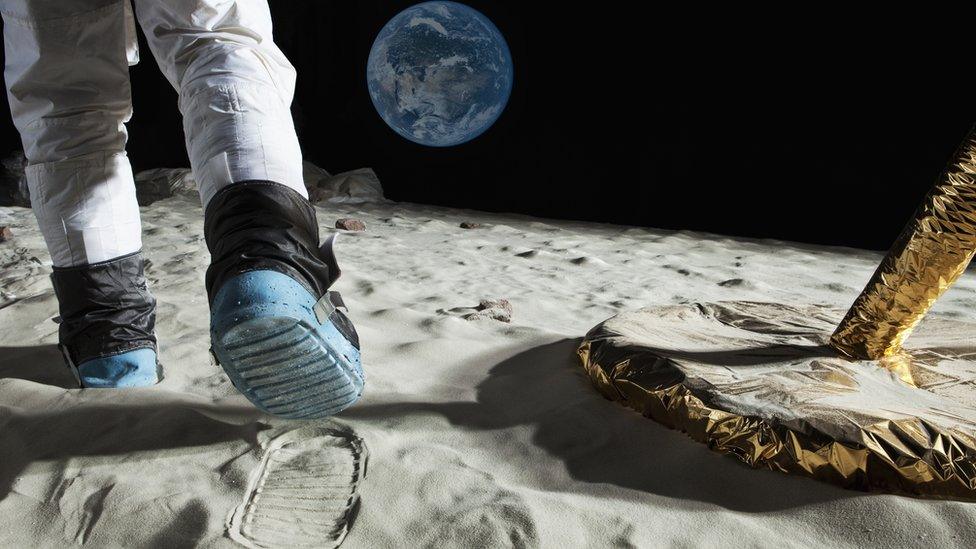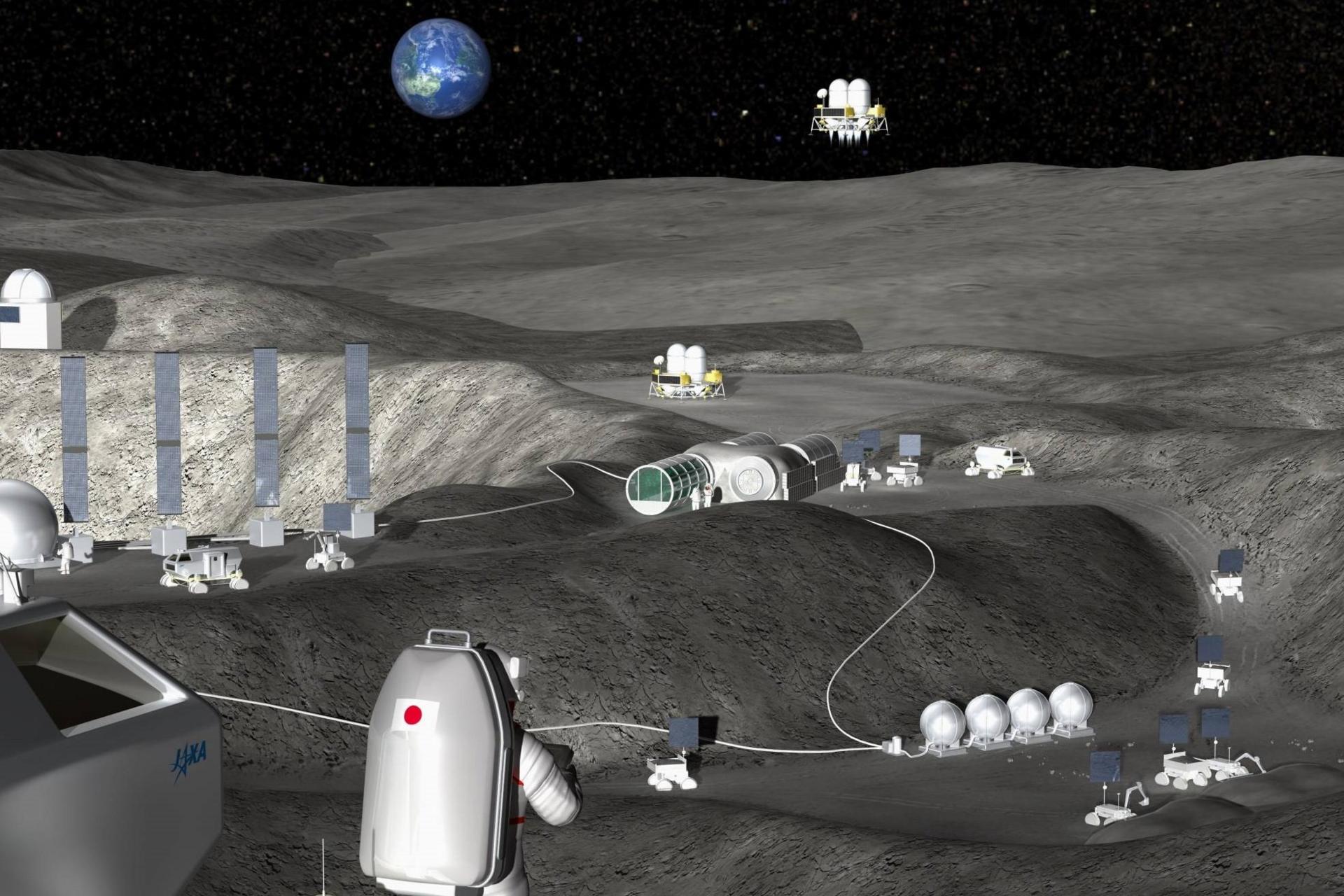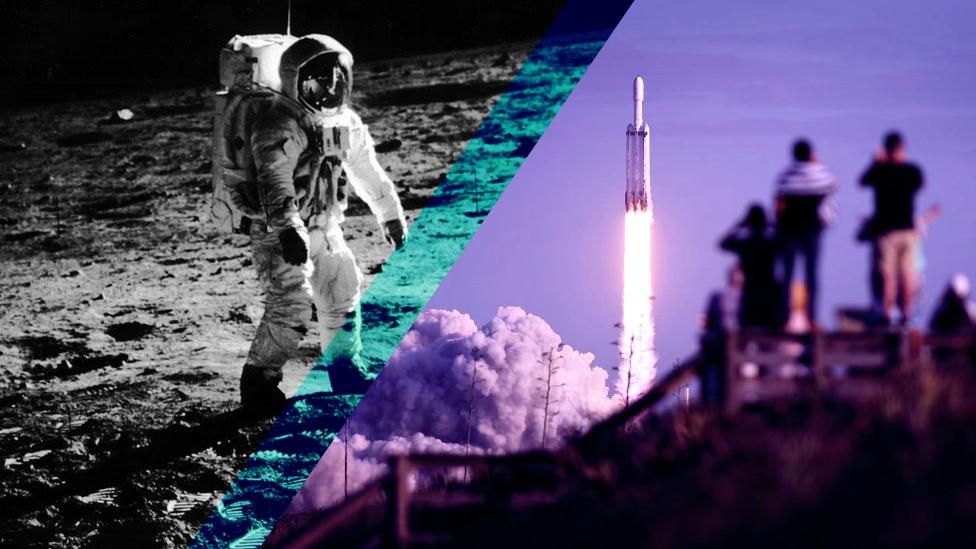How Moon ice could fuel Japan's spaceships
- Published
- comments

Japan wants to use ice on the Moon to refuel its spaceships.
The Japan Aerospace Exploration Agency (JAXA) hopes to find ice containing hydrogen in the coldest places on the Moon's surface.
Hydrogen is a chemical that can be used for fuel and if successful it would mean spacecrafts could stop off at the Moon before journeying home or out further into space.
Scientists believe there could be ice deposits containing hydrogen near the Moon's south pole; hiding in the shadows of its many craters and untouched by the heat of the Sun.
What are conditions like on the Moon?
Japan is planning several lunar missions in the 2030s, and hopes that any hydrogen found on the surface will make those journeys cheaper.
It will mean spacecraft will only have to pack enough fuel for one trip to the Moon. Once they get there, they will be able to refuel for the return journey.
Normally a ship will carry enough fuel for a journey there and back, making it heavier and needing more power to move, more power means it's more expensive.

What a fuel factory on the moon might look like
The Lunar Gateway
As part of the plans, Japan plans to work with Nasa over the next two years in building a lunar orbit space station, called Gateway.
The Gateway station is set to play a major role in Nasa's Artemis program, landing the next man and first woman on the Moon by 2024.
By 2035 there are plans to have a fuel factory built at the Moon's south pole.
Once the fuel is collected it will be used in a reusable spacecraft that can carry four astronauts to and from the Moon to the orbiting station.
A transport vehicle on the Moon will also use the fuel, allowing astronauts to explore up to 621 miles of the lunar surface.
Since the Moon has weak gravity, it will move by hopping across the ground instead of using wheels.
- Published30 September 2020

- Published13 May 2020

- Published20 July 2019

